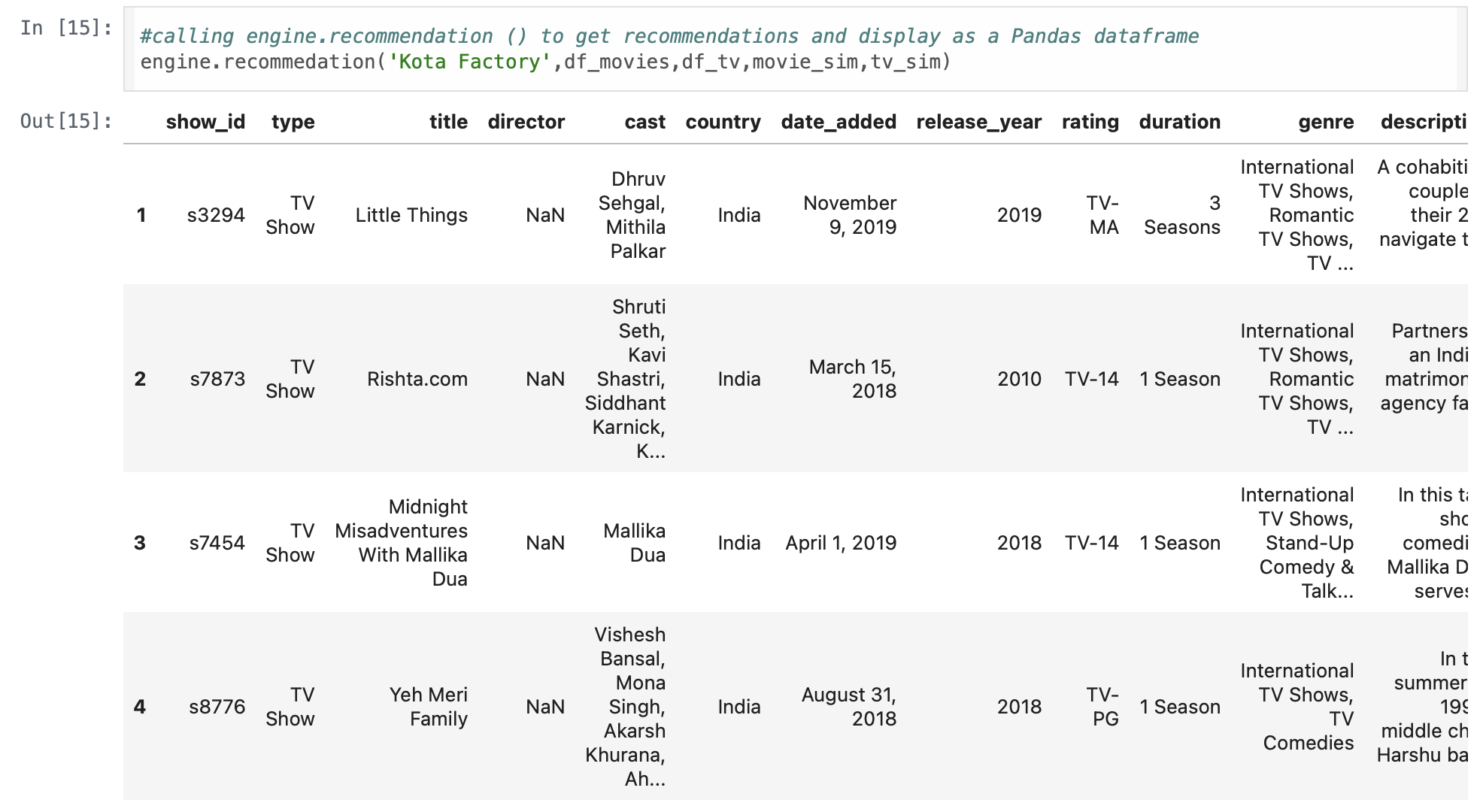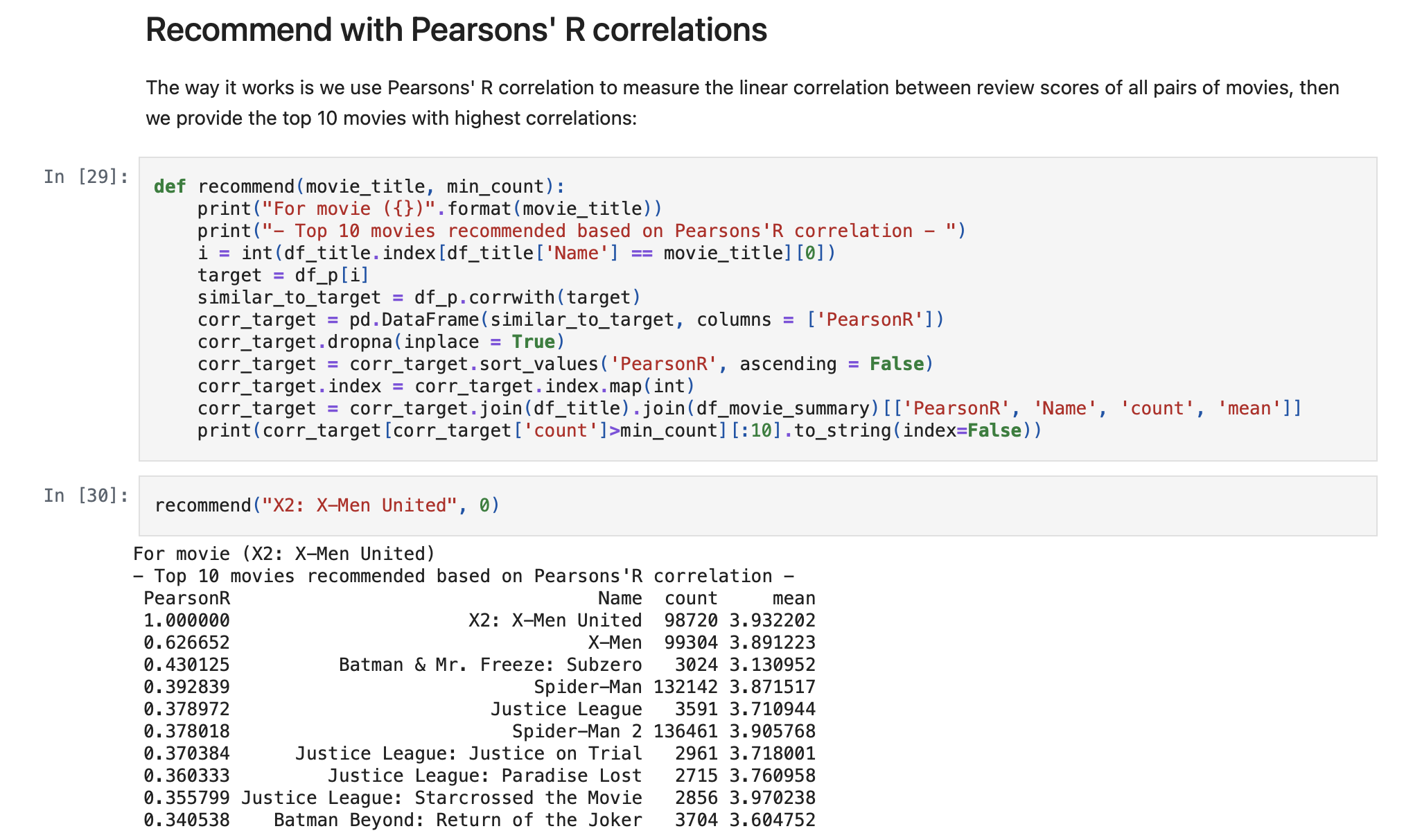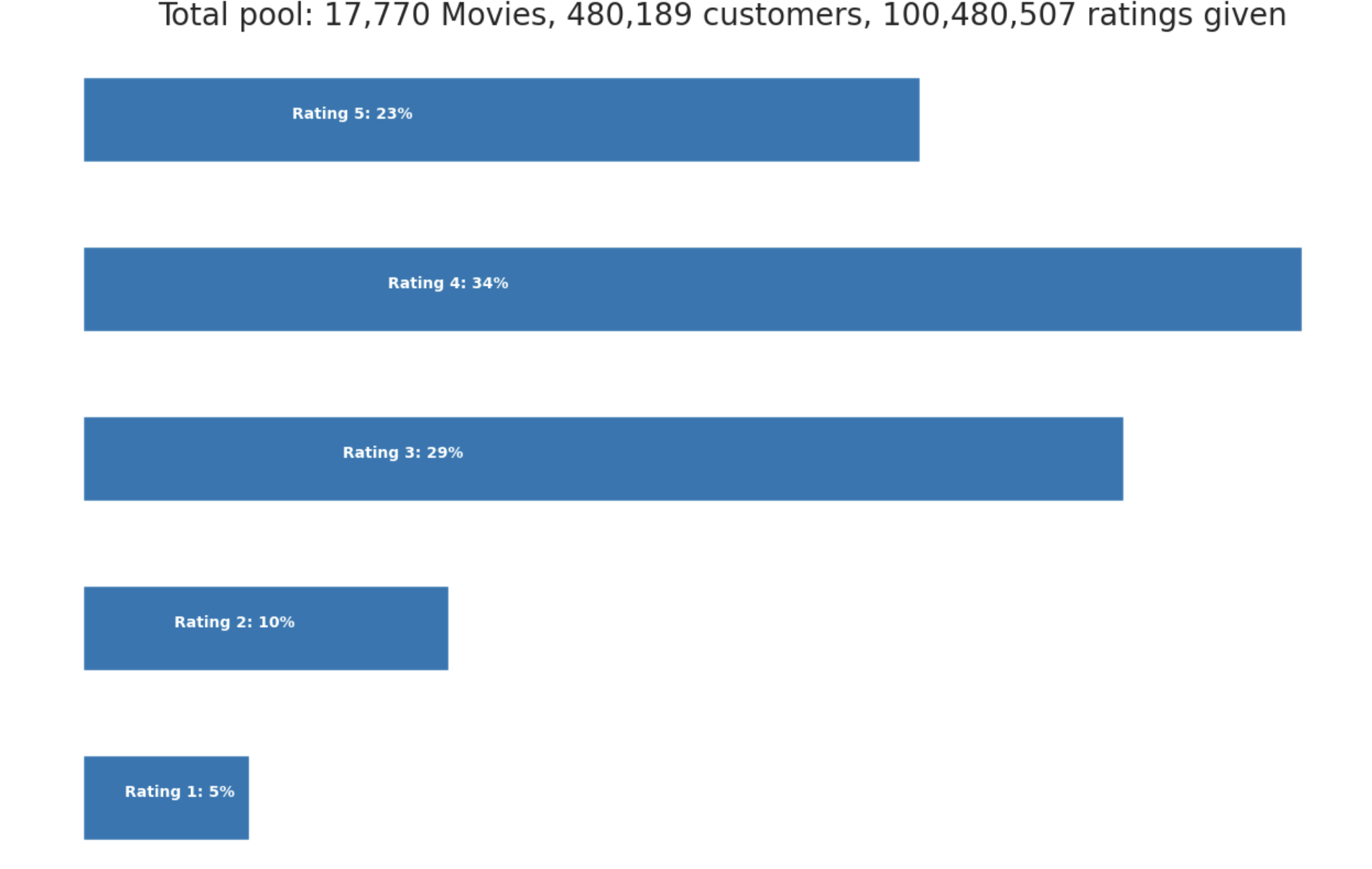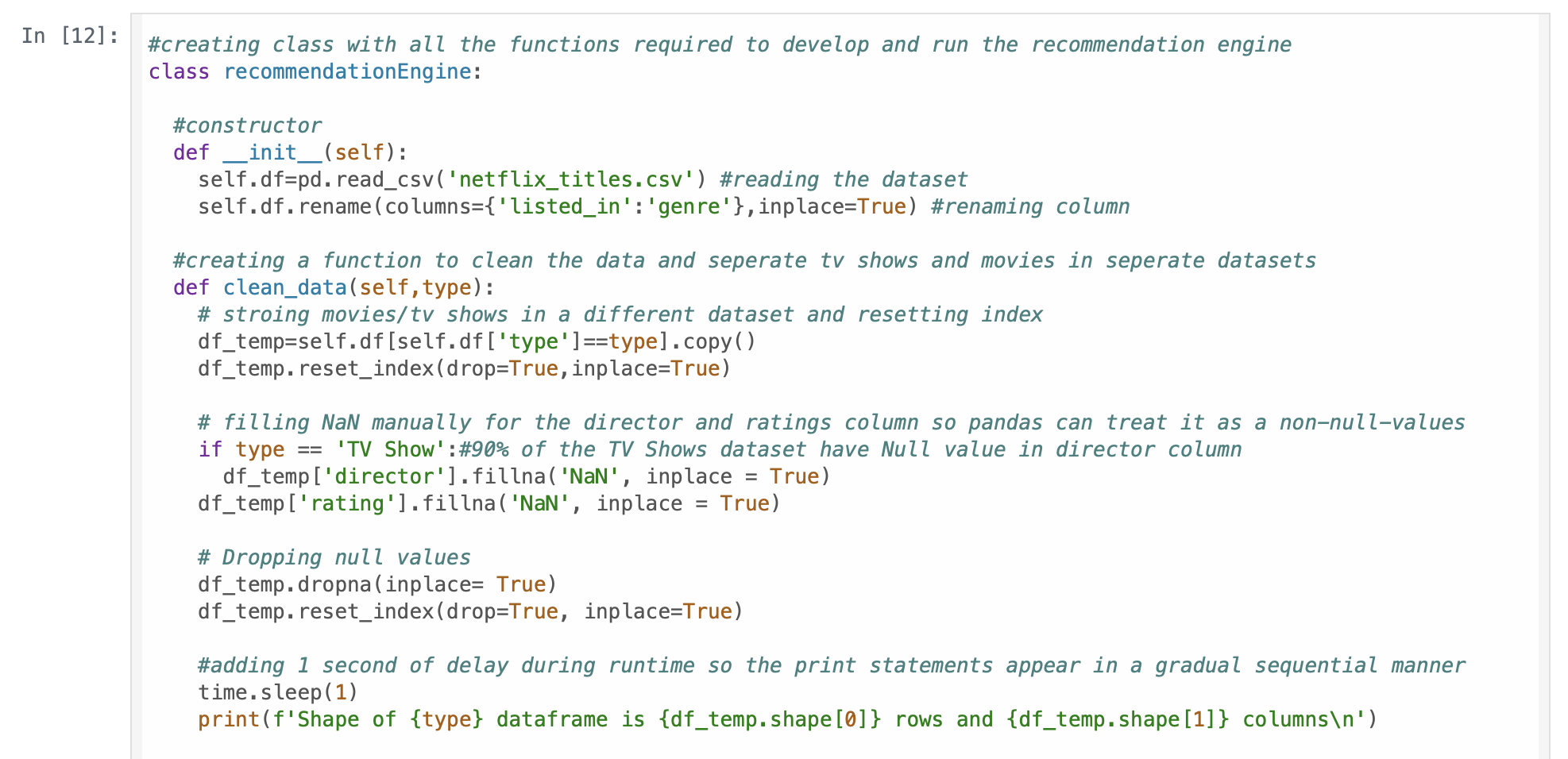Project information
- Category: Machine Learning, Recommendation Systems, Data Science
- Project date: March, 2024
- GitHub: Recommendation Systems
Introduction
This project implements various recommendation system algorithms to provide personalized suggestions to users. The repository contains implementations of both content-based and collaborative filtering approaches, along with hybrid methods that combine multiple techniques for improved recommendation accuracy.
Recommendation systems are crucial in today's digital landscape, helping users discover relevant content, products, and services. This project demonstrates practical implementations of these systems using real-world datasets and modern machine learning techniques. One notable implementation is a Netflix-style recommendation system that uses content-based filtering to suggest movies and TV shows based on user preferences.
Objective
The primary objectives of this project were to:
- Implement and compare different recommendation system approaches
- Develop content-based filtering using feature extraction and similarity metrics
- Create user-based collaborative filtering with neighborhood-based methods
- Implement matrix factorization techniques for latent factor modeling
- Evaluate system performance using appropriate metrics
- Provide clear documentation and examples for each implementation
Process
The development process involved several key phases:
- Data Collection and Preprocessing: Gathered and cleaned relevant datasets, including Netflix data with features like cast, director, country, and genre
- Content-Based System: Implemented feature extraction using CountVectorizer, text processing with neattext, and cosine similarity for content-based recommendations
- Collaborative Filtering: Developed user-based collaborative filtering with various similarity metrics and neighborhood selection methods
- Matrix Factorization: Implemented Singular Value Decomposition (SVD) and Alternating Least Squares (ALS) for latent factor modeling
- Evaluation: Used metrics like RMSE, MAE, and precision@k to evaluate system performance
- Documentation: Created comprehensive documentation and examples for each implementation
Tools and Technologies
The project utilized a comprehensive set of tools and technologies:
Programming Languages:
- Python
Libraries:
- NumPy
- Pandas
- Scikit-learn
- neattext
- Plotly
- Jupyter Notebook
Algorithms:
- Content-Based Filtering
- User-Based Collaborative Filtering
- Matrix Factorization (SVD, ALS)
- Cosine Similarity
- Pearson Correlation
Advancing Recommendation Systems
This project demonstrates the practical implementation of various recommendation system approaches, providing valuable insights into their strengths and limitations. The implementations serve as a foundation for understanding how recommendation systems work and can be adapted for different use cases.
The project's significance lies in its comprehensive coverage of different recommendation approaches and its focus on practical implementation. By providing clear examples and documentation, it helps bridge the gap between theoretical understanding and practical application of recommendation systems. The Netflix-style implementation showcases how content-based filtering can be effectively used for movie and TV show recommendations.
Future development plans include implementing more advanced techniques like deep learning-based recommendations, incorporating temporal dynamics, and adding support for implicit feedback. The project also aims to include more real-world datasets and improve the evaluation framework. Additional features planned include enhanced visualization capabilities and performance optimization for larger datasets.




